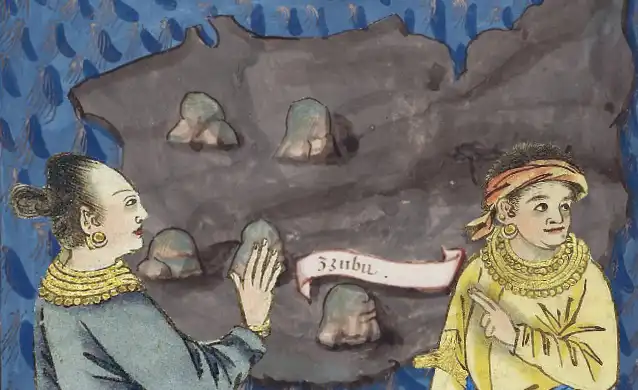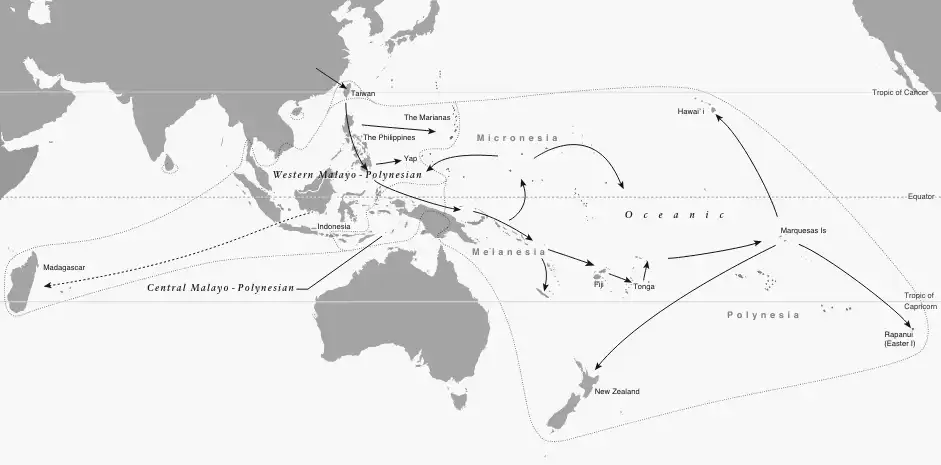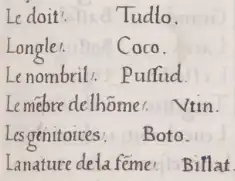
Enrique as a Bisaya Hero

Depending on which torrent site you legally obtained your copy of Daft Punk’s Around the World, you will have heard the phrase “around the world” repeated about 80 times, or even more, when the song ends. Its message is simple, it just wants to tell you “around the world” and nothing else. Other information are unnecessary. So the listener, if curious, is left asking, “what do they mean by around the world? Did something go around the world? Are things happening simultaneously around the world? Or is this a convincing yet covert refutation of the flat-earth pseudoscience?” No easy answer can be deduced; only, one commits to memory the line “around the world” perforce. Repetition matters here. Every iteration is a hammer blow to the brain and listeners can only do so much against the onslaught of irresistible rhythm. A similar dynamic is observed in the much bandied and endlessly repeated historical claim that Magellan’s slave Enrique was actually the first to circumnavigate the earth, that is, he was the first person, although with a lot less groove, to really go around the world.
Though without the backing of electronic music, Enrique, Magellan’s sailing slave (or itinerant interpreter to be less demeaning), stays on beat with modern popular consciousness thanks to a spirited undercurrent that fuels his reknown. The power of postcolonial scholarship has provided Enrique with an academic platform that ensures his immortality and recurrent online visibility. And his ascent to such historical heights is premised on having knocked Magellan down from where the Portuguese once stood tall alongside many great explorers. No less than National Geographic made an effort to strip Magellan of his supposed success and accord it to Enrique instead, who, they say, “was likely raised there before his enslavement—making him, not Magellan, the first person to circumnavigate the globe.” By “there” they mean, of course, the Philippines.
The above insinuation brings to light a crucial element of Enrique’s character that makes his figure a more compelling challenge against colonialist conceit: in an ironic yet fitting twist, he as a slave was not only his master’s foil, but he has since become a defiant face of the people that Magellan tried to trammel. An article written by Penélope Flores for the website Positively Filipino argues that “it was [Magellan’s] Malay interpreter who should truly be credited with the impressive feat.” Flores supplies the article with a number of reasons why, with the foremost being that Enrique possibly came from an island south of Luzon. That is to say, there is a chance that Enrique might have been a Bisaya. However, Flores admits that there is “no direct evidence” to support this supposition, only, it can be inferred from reading “historical Southeast Asian documents regarding a rich Filipino trading community in Minjam in the early 16th century.” By mere virtue of probability, Enrique is granted Filipino citizenship.
Any scrupulous and diligent student of history will surely doubt if statistical inference alone is enough to expedite Enrique’s repatriation. Nevertheless, strong support for his case did come about, put forward not just by anybody, but by someone of great repute. National Artist for Historical Literature Carlos Quirino leapfrogged numerical reckoning and instead relied on his artistic whims to conjure the perfect case to launch his revanche for Enrique’s purported origins. According to independent researcher Bob Couttie, it was in 1980 when Quirino first argued for Enrique’s Philippine patrimony. In a lecture given that year, Quirino categorically claimed that “[l]inguistic evidence is conclusive that the so-called slave Enrique was a Cebuano.”
It comes as no surprise that Quirino should summon linguistics to face the jury and testify for Enrique’s Filipino nationality. After all, his craft as a writer revolves around his use of language to shape his art. And in his attempt to salvage all possible information about Enrique from the historical record, he launched words loose and wild, allowing artistic imagination to swamp academic rigour in forming his conclusion: even with scant extant records on hand, Quirino was able to come up with not just Enrique’s ethinicity, which he firmly believed was Bisaya, but he also managed to pinpoint Cebu as Enrique’s hometown.
In the first place, what is this “linguistic evidence” that Quirino speaks of? Since it was through Enrique that Magellan was able to communicate with the Bisaya, Quirino believes that “Enrique originally came from Cebu”. This goes against established wisdom built from scores of historical research that Enrique was either a native of Malacca or Sumatra. But Quirino would have nothing of it, because “the tongue spoken in Malacca is very different from that of any Philippine language.” Indeed, the Bisaya today would find themselves hardly able to verbally communicate with the locals of Malacca and Sumatra; ordering “pantat” in the Visayas and in Malay speaking communities returns mixed, yet interesting results.

Map showing the widespread radiation of Austronesian languages. Taken from The Routledge Handbook of Historical Linguistics.
In his insistence in highlighting differences, Quirino fails to see connections that were once clear, but progressively blur as time ceaselessly sails forward. The ancestors of the Bisaya and Malay are historically (and genetically linked) for they are one and the same—a seafaring community that sailed south from Taiwan thousands of years ago. Their exodus has led to the emergence of the large Austronesian language family, which, according to linguist Ritsuko Kikusawa, “consists of some 1,200 languages, which are widely dispersed throughout the islands of Southeast Asia and the pacific, with a few members spoken on continental Asia.” Moreover, Kikusawa adds that “[t]he membership of the languages in this family is considered to be generally well established with regular sound sound correspondences and shared lexical items”, leading to a degree of intelligibility among speakers of different Austronesian languages, a degree that increases the more one goes back in time.1 Historian Zeus Salazar generously estimates that “[a]t least 40% of the vocabulary that we have in our Philippine languages we would be able to find elsewhere in Indo-Malaysia, the Pacific island world and Madagascar.”2
Luckily, chief chronicler of the Magellan expedition Antonio Pigafetta left us a list of Bisaya words that he had learned during their stay in the Visayas. It is a snapshot of what the Bisaya language was still like in the 16th century, and it shows that even in ordinary talk there were still remnants of Malay in local conversations. Many of the recorded words are still in use today, like the numbers one to ten, which are very similar to that of Bahasa Melayu and Indonesia. Meanwhile, anatomical terms have become patently Bisaya (see image below). Finger is listed as tudlo, rightly corresponding to what is used nowadays; whereas it’s jari in both Bahasa Melayu and Indonesia. However, there are also words, for example tidak meaning no, that fell out of use in Bisaya tongues but continue to roll out of the mouths of Malay speakers.

Word by word translation: le doit (finger) - tudlo; longle (nails) - coco; le nombril (navel) - pussud; le mẽbre delhõme (male genital) - utin; les genitoiries (genitalia) - boto; le nature de la fẽme (the female nature) - billat. Note that in modern Bisaya languages, boto and bilat refer to the male and female genitalia, respectively.
Yet, it’s possible that the reason why Enrique could understand the locals was not because of the similar syntax and sheer number of cognates between Bisaya and Malay, but perhaps they were talking to each other in Cebuano Bisaya, the language that Enrique supposedly grew up with. However, to consider this is to also welcome its converse, that whoever spoke to Enrique could have possibly communicated in a Malay tongue; that is to say, Enrique was able to transmit and translate what the Spaniards wanted to say and hear because some in the Visayas also knew how to speak Malay, his likeliest mother tongue. Owing to the history of maritime politics and trade in the region, the latter is more probable, as the foremost thalassocracies in maritime Southeast Asia spoke early and local forms of Malay. They had the political power and commercial cachet to aver their culture outwards, leading to the expansion and development of Malay as a regional lingua franca as early as the 7th century.3 As for Cebu, it was a thriving trading hub by the time the Spaniards arrived in 1521 thanks to its welcoming shores. Some survivors of the Magellan expedition were actually sold to Chinese merchants in its markets. But Cebu didn’t have the military and commercial authority to command widespread use of its language far beyond its reach.
The notion is made even more evident when investigating the main document where Enrique’s role as interpreter is first attested in history. In Pigafetta’s journal, Magellan sent Enrique not to discuss matters with the ordinary folk of Cebu, but with the king himself, Humabon. And for good reason. As king, it was expected that he and/or someone close to him were conversant in Malay, otherwise they’d be put at a great political and economic disadvantage over their rivals who were able to do so. Linguist John Wolff concurs, saying that “[t]here is no question that Malay was the language used” during the negotiations.4

Passage in Pigafetta’s 1525 manuscript where Magellan sends a young man that he had taken under his wing along with the interpreter, Enrique, to speak to the king of Cebu.
The “linguistic evidence” thus contradicts Quirino’s assertion on two fronts: first, despite the differences, there was still a significant degree of commonality between Bisaya and Malay in the 16th century that would have made communication between Enrique and the Cebuanos possible (though not necessarily easy and clear); and second, the likeliest language used in Enrique’s dealings with Humabon was Malay, as it was the regional lingua franca of politics and trade. As can be clearly seen, in either case, Enrique need not be Cebuano to communicate with the Cebuanos, rendering Quirino’s baseless claim as nothing but a desperate attempt to drum national thunder with tin gongs that can only make noise, never music.
In choosing to say more while knowing less, words and languages have come to haunt the writer; and like Magellan, Quirino is left facing the cruelty of irony with posterity as witness. He is defeated by his own devices. “Hoist with his own petard,” says Shakespeare, perhaps most fittingly. His bombshell claim has skyrocketed Enrique to national fame with him piggybacking along. But imagination can only fuel such statements so far, and without solid proof, they’re bound for a free fall. Only historical truth can provide such claims with the upward lift to keep it afloat. And though Quirino’s Cebuano Enrique currently enjoys the privilege of public and widespread repetition, like Daft Punk’s track, it will eventually come to an end. Whether or not it retains its funk, only time can tell and smell.
-
Ritsuko Kikusawa, “The Austronesian language family,” in The Routledge Handbook of Historical Linguistics, eds. Claire Bowern & Bethwyn Evans (Oxon; New York: 2015), 657. ↩︎
-
Zeus Salazar, The Malayan Connection: Ang Pilipinas sa Dunia Melayu (Palimbagan ng Lahi: Quezon, 1998), 72. ↩︎
-
Peter Bellwood, “Southeast Asia before History,” in The Cambridge History of Southeast Asia, vol. 1, From Early Times to c. 1800 (Cambridge: Cambridge University Press, 2008), 114. ↩︎
-
John Wolff, “Malay Borrowings in Tagalog,” in Southeast Asian History and Historiography: Essays Presented to D.G.E. Hall, eds. C.D. Cowan & O.W. Wolters (Ithaca: Cornell University Press, 1976), 346. ↩︎
Did you like what you read? Then consider subscribing to the Bibliotikal newsletter to get immediate alerts on new posts, local history news, and activity announcements.
Share on: